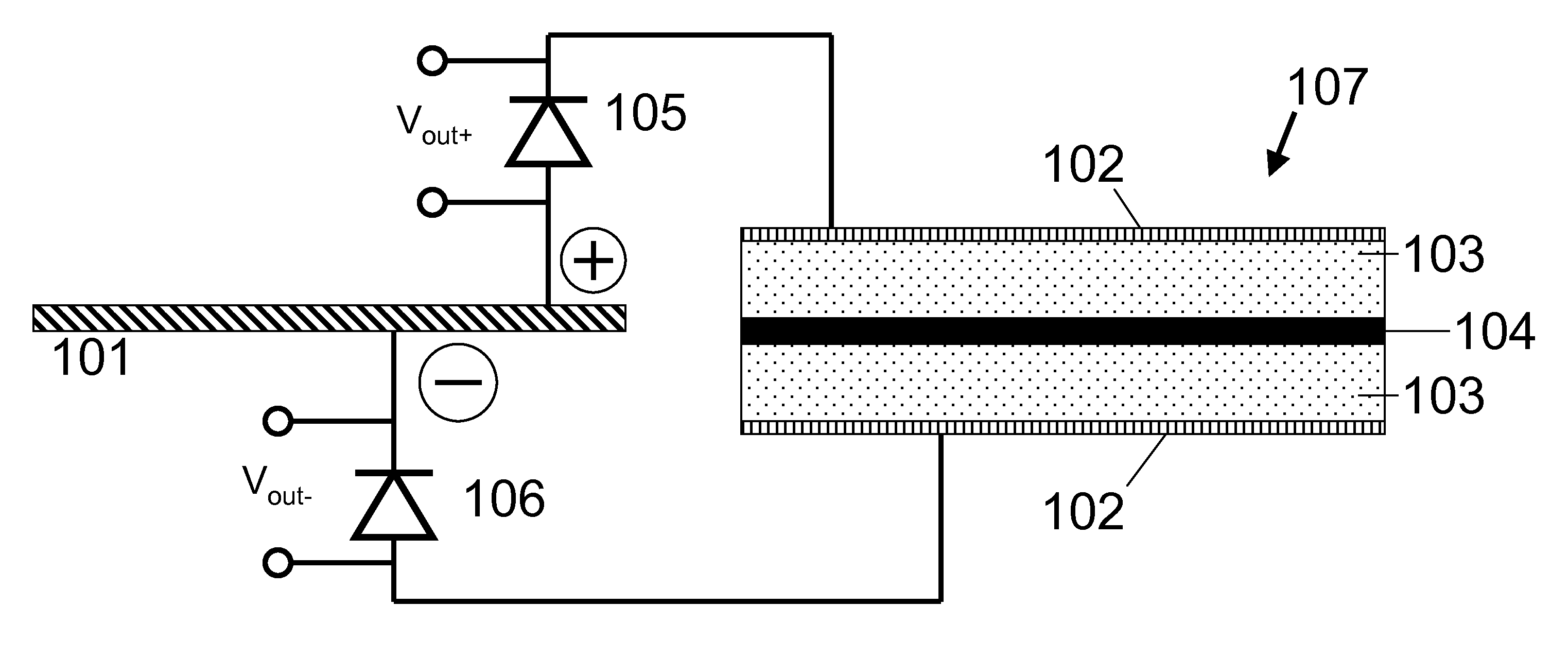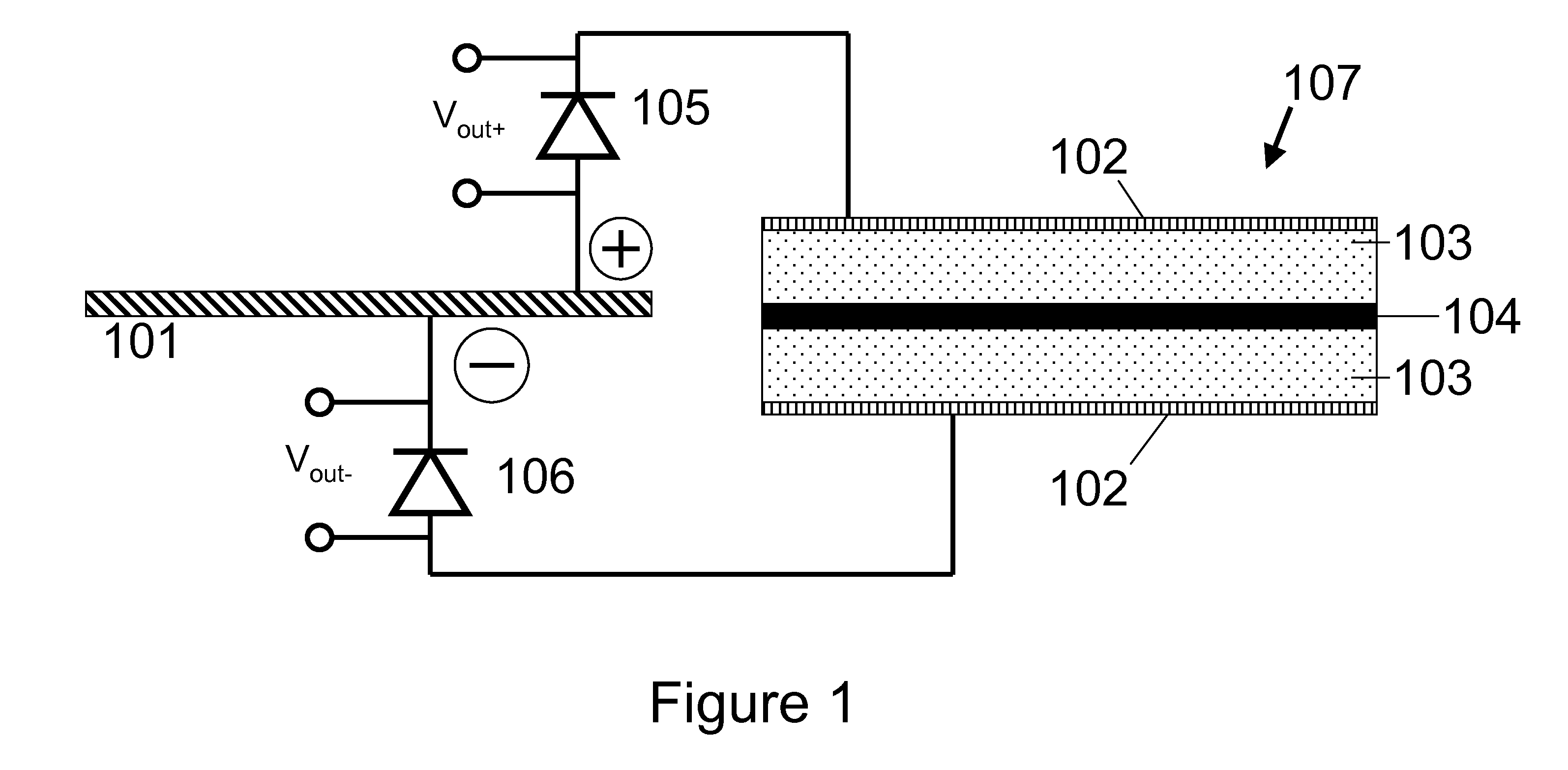Elastomeric Piezoelectric Ultracapacitor
a piezoelectric ultracapacitor and elastomeric technology, applied in the direction of generator/motor, device details, device details, etc., can solve the problems that dielectric elastomers operated in generator mode, however, do not themselves create energy, and the ability to produce piezoelectric materials is limited. to achieve the effect of increasing the power generation capability of the piezoelectric ultracapacitor
- Summary
- Abstract
- Description
- Claims
- Application Information
AI Technical Summary
Benefits of technology
Problems solved by technology
Method used
Image
Examples
Embodiment Construction
Referring to FIG. 1, piezoelectric element 101 is coupled to ultracapacitor 107 through diodes 105 and 106. Piezoelectric element 101 can be formed of one or more portions of any suitable piezoelectric material, such as polyvinylidene difluoride (known as “PVDF”) or lead zirconate titanate (often referred to as “PZT”). The invention is not limited to the use of these materials, though it is believed that the flexible nature of these two piezoelectric materials provides some protection from cracking or other damage during use. Flexible piezoelectric materials are therefore preferred.
Moreover, experiments have shown that the power generation capabilities are not greatly enhanced by the use of PZT (which is inherently capable of creating higher voltages than PVDF); PVDF is therefore preferred due to its lower cost. Such materials are known and commercially available from many different sources. PVDF, for example, is available commercially under the trade names KYNAR® and KYNAR FLEX® by...
PUM
 Login to View More
Login to View More Abstract
Description
Claims
Application Information
 Login to View More
Login to View More - R&D
- Intellectual Property
- Life Sciences
- Materials
- Tech Scout
- Unparalleled Data Quality
- Higher Quality Content
- 60% Fewer Hallucinations
Browse by: Latest US Patents, China's latest patents, Technical Efficacy Thesaurus, Application Domain, Technology Topic, Popular Technical Reports.
© 2025 PatSnap. All rights reserved.Legal|Privacy policy|Modern Slavery Act Transparency Statement|Sitemap|About US| Contact US: help@patsnap.com



